Browse our Growing Library of Success Stories
By:
Steve Stuebner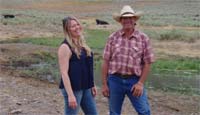 Extensive outreach by Pioneers Alliance conservation partners and ground-breaking research on antelope migration patterns, funded by the Lava Lake Institute for Science and Conservation and Wildlife Conservation Society, has led to the protection of approximately 94,000 acres of private ranchland rich with wildlife values particularly for sage grouse and antelope.
Extensive outreach by Pioneers Alliance conservation partners and ground-breaking research on antelope migration patterns, funded by the Lava Lake Institute for Science and Conservation and Wildlife Conservation Society, has led to the protection of approximately 94,000 acres of private ranchland rich with wildlife values particularly for sage grouse and antelope.
https://www.landcan.org/success/Landownerled-campaign-protects-94000-acres-of-habitat-on-private-lands/3601/
By:
Jonathan Baxter, Partners for Fish and Wildlife Biologist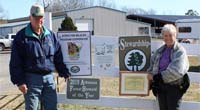 Many partners yield many benefits for Arkansas ranch and the butterflies that live there. Diamond TR Ranch is an example of what can be accomplished when partnerships, programs and professionals work together to accomplish the landowners goals.
Many partners yield many benefits for Arkansas ranch and the butterflies that live there. Diamond TR Ranch is an example of what can be accomplished when partnerships, programs and professionals work together to accomplish the landowners goals.
https://www.landcan.org/success/Monarchs-on-the-ranch/3594/
By:
Steve Stuebner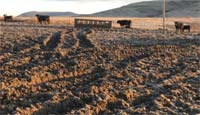
Over 16 Idaho County ranchers signed up to install BMPs
In the beautiful rolling draws and hills of North Idaho’s Camas Prairie, numerous Idaho County cattle ranchers are stepping up to install a host of best management practices on cattle wintering grounds to get their livestock out of the mud and improve water quality in Red Rock Creek, Cottonwood Creek and the South Fork of the Clearwater River.
https://www.landcan.org/success/Partners-Reduce-Mud-Improve-Water-Quality-on-Camas-Prairie-Waterways/3593/
By:
Steve Stuebner
Like many ranchers, Mayfield rancher Jeff Lord watches for opportunities to improve the public range where his cattle graze.
Following the 280,000-acre Pony-Elk Complex wildfires in 2013, Lords partnered with state and federal agencies to assist with range-rehabilitation projects in the Danskin Mountains.
https://www.landcan.org/success/Restoring-rangelands-in-the-Danskin-Mountains-of-Idaho/3591/
By:
University of MaineTour U.S. Forest Service research at the Penobscot Experimental Forest and see how different kinds of silviculture and harvesting have changed the forest over more than half a century. Learn from experts at the University of Maine, Maine Forest Service, Maine Audubon, and others around the state about how to manage your woodlot for the future, considering timber production, climate change, pests and disease.
https://www.landcan.org/success/Forestry-for-the-Future-Lessons-in-Sustainable-Management-from-Maine/3588/
By:
Texas Parks and Wildlife Foundation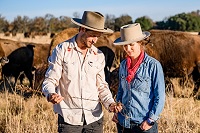 Taylor Collins’ and Katie Forrest’s life journey has taken them from restoring their bodies to restoring their land. The once-vegetarian Austin couple went vegan after health issues got in the way of sports training. When things got worse, they consulted a nutritionist who urged them to add clean meat protein to their diet.
Taylor Collins’ and Katie Forrest’s life journey has taken them from restoring their bodies to restoring their land. The once-vegetarian Austin couple went vegan after health issues got in the way of sports training. When things got worse, they consulted a nutritionist who urged them to add clean meat protein to their diet.
https://www.landcan.org/success/We-Will-Not-Be-Tamed-Meet-Taylor-and-Katie/3565/
By:
National Geographic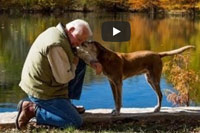 Almost 50 years ago, fried chicken tycoon David Bamberger used his fortune to purchase 5,500 acres of overgrazed land in the Texas Hill Country. Planting grasses to soak in rains and fill hillside aquifers, Bamberger devoted the rest of his life to restoring the degraded landscape. Today, the land has been restored to its original habitat and boasts enormous biodiversity. Bamberger's model of land stewardship is now being replicated across the region and he is considered to be a visionary in land management and water conservation.
Almost 50 years ago, fried chicken tycoon David Bamberger used his fortune to purchase 5,500 acres of overgrazed land in the Texas Hill Country. Planting grasses to soak in rains and fill hillside aquifers, Bamberger devoted the rest of his life to restoring the degraded landscape. Today, the land has been restored to its original habitat and boasts enormous biodiversity. Bamberger's model of land stewardship is now being replicated across the region and he is considered to be a visionary in land management and water conservation.
https://www.landcan.org/success/50-Years-Ago-This-Was-a-Wasteland-He-Changed-Everything/3563/
By:
K. Gregg Elliott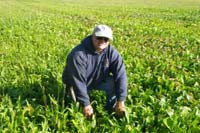 Like almost everyone else in his rural community, Gabe had been farming and ranching using conventional methods since purchasing his Brown’s Ranch from the parents of his wife Shelly in 1991. Possibly because he had not grown up on a farm, Gabe found that he was constantly asking the question, “why do we do things this way?”
Like almost everyone else in his rural community, Gabe had been farming and ranching using conventional methods since purchasing his Brown’s Ranch from the parents of his wife Shelly in 1991. Possibly because he had not grown up on a farm, Gabe found that he was constantly asking the question, “why do we do things this way?”
https://www.landcan.org/success/Browns-Ranch-in-North-Dakota-Guided-by-the-divine/3549/
By:
National Grazing Lands Coalition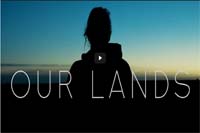 Our lands and soil are possibly the most underappreciated resources we have, yet their conservation is vital to humanity. We need to have an important discussion on what can be done to protect the planet through proper land management. This video, produced by the National Grazing Lands Coalition (NatGLC), it shares one of the many stories about the importance of the work ranchers and farmers do every day. “I think people have forgotten the large amounts of land that ranchers like us preserve and maintain in order to raise beef and provide ecosystem services,” says Chad Ellis, NatGLC’s Board Chair. “It’s time for a fresh perspective being taken into account when discussing our country’s lands and I think that this video is very effective in communicating this message. Ranchers need to be part of the conversation on climate change solutions because they very well could be the answer.”
Our lands and soil are possibly the most underappreciated resources we have, yet their conservation is vital to humanity. We need to have an important discussion on what can be done to protect the planet through proper land management. This video, produced by the National Grazing Lands Coalition (NatGLC), it shares one of the many stories about the importance of the work ranchers and farmers do every day. “I think people have forgotten the large amounts of land that ranchers like us preserve and maintain in order to raise beef and provide ecosystem services,” says Chad Ellis, NatGLC’s Board Chair. “It’s time for a fresh perspective being taken into account when discussing our country’s lands and I think that this video is very effective in communicating this message. Ranchers need to be part of the conversation on climate change solutions because they very well could be the answer.”
https://www.landcan.org/success/Our-Lands/3546/
By:
Northwest Florida Water Management District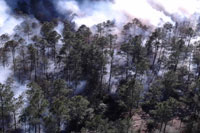 On March 2, 2018, a large prescribed burn occurred at the Yellow River Water Management Area in Santa Rosa County, Florida, which is managed by the Northwest Florida Water Management District. Weather and atmospheric conditions were ideal and resources were available for the Florida Forest Service to approve the burn permit. Aerial ignition via helicopter started the fire systematically across the landscape. Ground firing and monitoring crews, consisting of 15 personnel were stationed at the tract perimeter as ground support during the burn.
On March 2, 2018, a large prescribed burn occurred at the Yellow River Water Management Area in Santa Rosa County, Florida, which is managed by the Northwest Florida Water Management District. Weather and atmospheric conditions were ideal and resources were available for the Florida Forest Service to approve the burn permit. Aerial ignition via helicopter started the fire systematically across the landscape. Ground firing and monitoring crews, consisting of 15 personnel were stationed at the tract perimeter as ground support during the burn.
https://www.landcan.org/success/Florida-Partnership-Enables-LandscapeLevel-Prescribed-Burn/3492/
By:
Georgia Department of Natural Resources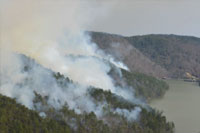 Tallulah Gorge State Park and the town of Tallulah Falls, Georgia are surrounded by a unique, fire-adapted forest community that, without low-intensity fire management, would gradually disappear. Restoration efforts are currently underway tore-establish this forest community with prescribed fire and mechanical treatments.
Tallulah Gorge State Park and the town of Tallulah Falls, Georgia are surrounded by a unique, fire-adapted forest community that, without low-intensity fire management, would gradually disappear. Restoration efforts are currently underway tore-establish this forest community with prescribed fire and mechanical treatments.
https://www.landcan.org/success/Georgia-State-Park-Restores-Important-PineOak-Forest-Community-with-Prescribed-Fire/3491/
By:
U.S. Fish & Wildlife Service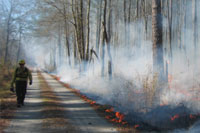 The 112,000 acre Great Dismal Swamp National Wildlife Refuge near Suffolk, Virginia has a long history of large and dangerous wildfires. One and a half million people live adjacent to the swamp, making the Refuge boundary a significant Wildland Urban Interface (WUI). For this reason, wildfire management and smoke concerns are a major issue at the Refuge. To assist in early fire detection and prevention, NASA developed an interagency agreement with the Refuge and an additional agreement with the Federal Aviation Administration (FAA) to build and operate several inexpensive drones, or unmanned aerial vehicle (UAV), for use at the Refuge.
The 112,000 acre Great Dismal Swamp National Wildlife Refuge near Suffolk, Virginia has a long history of large and dangerous wildfires. One and a half million people live adjacent to the swamp, making the Refuge boundary a significant Wildland Urban Interface (WUI). For this reason, wildfire management and smoke concerns are a major issue at the Refuge. To assist in early fire detection and prevention, NASA developed an interagency agreement with the Refuge and an additional agreement with the Federal Aviation Administration (FAA) to build and operate several inexpensive drones, or unmanned aerial vehicle (UAV), for use at the Refuge.
https://www.landcan.org/success/Drone-Use-Assists-in-Wildfire-Prevention-at-Great-Dismal-Swamp-Virginia/3490/
By:
Shelia Doughty, Arkansas Firewise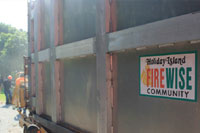 The Firewise program is a nationwide initiative that recognizes communities for taking action to protect people and properties from the risk of fire in the wildland/urban interface. Communities tailor education and clean-up to fit their needs with cooperative assistance from state forestry agencies and local fire staff. State forestry agencies support the Firewise Communities/USA recognition effort which works through the National Association of State Foresters (NASF). Arkansas leads the nation with the most recognized Firewise communities in the state.
The Firewise program is a nationwide initiative that recognizes communities for taking action to protect people and properties from the risk of fire in the wildland/urban interface. Communities tailor education and clean-up to fit their needs with cooperative assistance from state forestry agencies and local fire staff. State forestry agencies support the Firewise Communities/USA recognition effort which works through the National Association of State Foresters (NASF). Arkansas leads the nation with the most recognized Firewise communities in the state.
https://www.landcan.org/success/Firewise-Success-at-Holiday-Island-Arkansas/3489/
By:
USDA Forest Service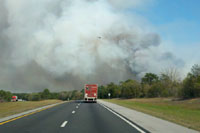 Over four long days in late March 2011, the most severe wildfire outbreak in a decade occurred at Eglin Air Force Base, located near Destin, Florida (Fig. 1). A persistent drought, 20 mph winds and low humidity, combined with 12-15 arson fires on the property, resulted in 6,000 acres burned in a matter of days. Due to Eglin’s aggressive prescribed fire program, the March 2011 wildfire severity and acres burned were significantly reduced. Without this regular fuel reduction, anywhere from 10-12,000 acres could have burned just on the Eglin side, with untold acres burned and property damaged north of Interstate 10.
Over four long days in late March 2011, the most severe wildfire outbreak in a decade occurred at Eglin Air Force Base, located near Destin, Florida (Fig. 1). A persistent drought, 20 mph winds and low humidity, combined with 12-15 arson fires on the property, resulted in 6,000 acres burned in a matter of days. Due to Eglin’s aggressive prescribed fire program, the March 2011 wildfire severity and acres burned were significantly reduced. Without this regular fuel reduction, anywhere from 10-12,000 acres could have burned just on the Eglin side, with untold acres burned and property damaged north of Interstate 10.
https://www.landcan.org/success/Prescribed-Fire-Program-Reduces-Wildfire-Severity/3488/
By:
US Forest Service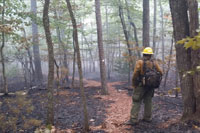 On July 14, 2015, a lightning strike ignited a wildfire on Bald Knob in the Grandfather Ranger District (GRD) of the Pisgah National Forest. Only 30 miles outside of Asheville, North Carolina and on rugged terrain difficult to access, the wildfire may have posed greater threat had it not been adjacent to areas containing recent fuel treatments (prescribed fire) and wildfires. These treatments, as part of the Collaborative Forest Landscape Restoration Program (CFLRP), reduced fire fuel loads in the forest and enabled the Bald Knob fire to safely burn while protecting firefighters, local residents, structures, power line corridors, communication towers, and Forest Service property and surrounding land. Fuel treatments positively influenced the fire’s spread and allowed firefighting efforts to truly focus on protection of private properties. The inaccessible terrain as well as the confine and contain strategy allowed ample time to keep the effected community well informed of current fire behavior, smoke impacts and management plans for the fire.
On July 14, 2015, a lightning strike ignited a wildfire on Bald Knob in the Grandfather Ranger District (GRD) of the Pisgah National Forest. Only 30 miles outside of Asheville, North Carolina and on rugged terrain difficult to access, the wildfire may have posed greater threat had it not been adjacent to areas containing recent fuel treatments (prescribed fire) and wildfires. These treatments, as part of the Collaborative Forest Landscape Restoration Program (CFLRP), reduced fire fuel loads in the forest and enabled the Bald Knob fire to safely burn while protecting firefighters, local residents, structures, power line corridors, communication towers, and Forest Service property and surrounding land. Fuel treatments positively influenced the fire’s spread and allowed firefighting efforts to truly focus on protection of private properties. The inaccessible terrain as well as the confine and contain strategy allowed ample time to keep the effected community well informed of current fire behavior, smoke impacts and management plans for the fire.
https://www.landcan.org/success/Creating-a-Fire-Resilient-Landscape-in-the-Pisgah-National-Forest/3487/
By:
Brevard County Board of County Commissioners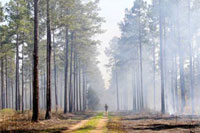 The Environmentally Endangered Lands (EEL) Program, located in Brevard County, Florida was established in 1990 to protect natural habitats while also providing recreational and educational opportunities to residents and visitors. Approved through referendum by Brevard County voters in 1990, the EEL program provides funding and guidance to form a network of sanctuary lands to be purchased and indefinitely managed by the Program.
The Environmentally Endangered Lands (EEL) Program, located in Brevard County, Florida was established in 1990 to protect natural habitats while also providing recreational and educational opportunities to residents and visitors. Approved through referendum by Brevard County voters in 1990, the EEL program provides funding and guidance to form a network of sanctuary lands to be purchased and indefinitely managed by the Program.
https://www.landcan.org/success/Brevard-County-Florida-Uses-Prescribed-Fire-to-Manage-Environmentally-Endangered-Lands/3486/
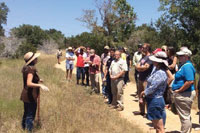 Two destructive wildfires in 2011 brought the importance of wildfire preparation and protection to the forefront of the City of Austin, Travis County, Texas. These fires led to a multi-year, multi-faceted project to address wildland fire safety in Austin-Travis County.
Two destructive wildfires in 2011 brought the importance of wildfire preparation and protection to the forefront of the City of Austin, Travis County, Texas. These fires led to a multi-year, multi-faceted project to address wildland fire safety in Austin-Travis County.
The Austin Fire Department (AFD) provided the human-power, expertise, and educational resources necessary to address wildland fire issues. In 2013, the AFD, with federal, state, and local partners, developed a Community Wildfire Protection Plan, a plan specifically designed to reduce wildland fire risk according to the needs of Austin-Travis County.
https://www.landcan.org/success/AustinTravis-County-Becomes-a-Model-Fire-Adapted-Community-Following-Destructive-Wildfires/3484/
By:
U.S. Fish and Wildlife Service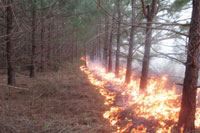 Enon-Sehoy Plantation, located in the Alabama Upper Coastal Plains, is a recreational, quail hunting property renowned for its open-story pine trees and diverse wildlife. The 27,500 acre, privately-owned property contains widely spaced longleaf, shortleaf, loblolly, and slash pine forests (basal area of 15-60 square feet per acre) with diverse understory grasses and forbs, such as bluestem, switchgrass, and the federally endangered American chaffseed. The forests and understory vegetation support abundant wildlife, including deer, turkey, and quail, as well as the threatened Bachman’s sparrow and the federally endangered red-cockaded woodpecker. Within four years, the property’s red-cockaded woodpecker population grew from just 3 clusters to 29 potential breeding groups.
Enon-Sehoy Plantation, located in the Alabama Upper Coastal Plains, is a recreational, quail hunting property renowned for its open-story pine trees and diverse wildlife. The 27,500 acre, privately-owned property contains widely spaced longleaf, shortleaf, loblolly, and slash pine forests (basal area of 15-60 square feet per acre) with diverse understory grasses and forbs, such as bluestem, switchgrass, and the federally endangered American chaffseed. The forests and understory vegetation support abundant wildlife, including deer, turkey, and quail, as well as the threatened Bachman’s sparrow and the federally endangered red-cockaded woodpecker. Within four years, the property’s red-cockaded woodpecker population grew from just 3 clusters to 29 potential breeding groups.
https://www.landcan.org/success/EnonSehoy-Plantation-Uses-Prescribed-Fire-to-Improve-Quail-and-Redcockaded-Woodpecker-Habitat/3483/
By:
US Forest Service In a unique partnership, the Florida Forest Service and The Nature Conservancy have joined forces as they use fire strike teams, currently referred to as Ecosystem Restoration Teams, to restore a variety of forest ecosystems and get fire back on the ground across the state of Florida.
In a unique partnership, the Florida Forest Service and The Nature Conservancy have joined forces as they use fire strike teams, currently referred to as Ecosystem Restoration Teams, to restore a variety of forest ecosystems and get fire back on the ground across the state of Florida.
https://www.landcan.org/success/Agencies-Join-Forces-to-Create-Ecosystem-Restoration-Teams/3482/
By:
Emily Nason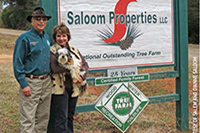 A retired surgeon, Salem Saloom, owns 2,200 acres of land and works to protect long leaf farms
A retired surgeon, Salem Saloom, owns 2,200 acres of land and works to protect long leaf farms
https://www.landcan.org/success/Salem-Saloom-and-the-Protection-of-the-Long-Leaf-Pines/3477/
 Sign In
Sign In
 Sign In
Sign In
